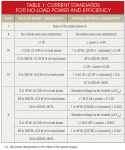I have 5 of these in my great room and I am not really happy with how much they will dim with my Lutron Diva dimmer. The lights are advertised as being able to dim down to 10%, the dimmer is brand new said to be compatible with LED & CFL. They only get down to a 60% brightness even with the adjustment all the way down. My fault for not checking the compatibility list. There are too many models of the same bulb!
http://www.lowes.com/ProductDisplay?catalogId=10051&langId=-1&productId=50223597
EDIT: What do you know, it IS on the compatible list. But still only goes to about 60%
I have 17 of these for the lights in my basement. They are fantastic and can dim really low with the same Lutron dimmer. Much better than the 9 year old 120W equivalent BR40 CFLs they are replacing.
http://www.lowes.com/pd_441164-43921-YGA08A35-17.5W-827_?productId=50244365
http://www.lowes.com/ProductDisplay?catalogId=10051&langId=-1&productId=50223597
EDIT: What do you know, it IS on the compatible list. But still only goes to about 60%
I have 17 of these for the lights in my basement. They are fantastic and can dim really low with the same Lutron dimmer. Much better than the 9 year old 120W equivalent BR40 CFLs they are replacing.
http://www.lowes.com/pd_441164-43921-YGA08A35-17.5W-827_?productId=50244365
Last edited:

